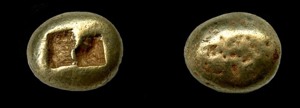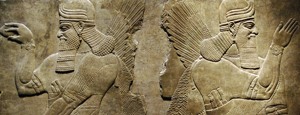Tavex uses cookies to ensure website functionality and improve your user experience. Collecting data from cookies helps us provide the best experience for you, keeps your account secure and allows us to personalise advert content. You can find out more in our cookie policy.
Please select what cookies you allow us to use
Cookies are small files of letters and digits downloaded and saved on your computer or another device (for instance, a mobile phone, a tablet) and saved in your browser while you visit a website. They can be used to track the pages you visit on the website, save the information you enter or remember your preferences such as language settings as long as you’re browsing the website.
| Cookie name | Cookie description | Cookie duration |
|---|---|---|
| tavex_cookie_consent | Stores cookie consent options selected | 60 weeks |
| tavex_customer | Tavex customer ID | 30 days |
| wp-wpml_current_language | Stores selected language | 1 day |
| AWSALB | AWS ALB sticky session cookie | 6 days |
| AWSALBCORS | AWS ALB sticky session cookie | 6 days |
| NO_CACHE | Used to disable page caching | 1 day |
| PHPSESSID | Identifier for PHP session | Session |
| latest_news | Helps to keep notifications relevant by storing the latest news shown | 29 days |
| latest_news_flash | Helps to keep notifications relevant by storing the latest news shown | 29 days |
| tavex_recently_viewed_products | List of recently viewed products | 1 day |
| tavex_compare_amount | Number of items in product comparison view | 1 day |
| Cookie name | Cookie description | Cookie duration |
|---|---|---|
| chart-widget-tab-*-*-* | Remembers last chart options (i.e currency, time period, etc) | 29 days |
| archive_layout | Stores selected product layout on category pages | 1 day |
| Cookie name | Cookie description | Cookie duration |
|---|---|---|
| cartstack.com-* | Used for tracking abandoned shopping carts | 1 year |
| _omappvp | Used by OptinMonster for determining new vs. returning visitors. Expires in 11 years | 11 years |
| _omappvs | Used by OptinMonster for determining when a new visitor becomes a returning visitor | Session |
| om* | Used by OptinMonster to track interactions with campaigns | Persistent |
| Cookie name | Cookie description | Cookie duration |
|---|---|---|
| _ga | Used to distinguish users | 2 years |
| _gid | Used to distinguish users | 24 hours |
| _ga_* | Used to persist session state | 2 years |
| _gac_* | Contains campaign related information | 90 days |
| _gat_gtag_* | Used to throttle request rate | 1 minute |
| _fbc | Facebook advertisement cookie | 2 years |
| _fbp | Facebook cookie for distinguishing unique users | 2 years |
The Historical Journey of Gold Bars

Gold bars, an emblem of wealth and prosperity, have a rich and intricate history that spans thousands of years and multiple civilisations. From their earliest appearances in ancient Mesopotamia to their role in modern financial systems, gold bars have been a constant symbol of value and stability.
This article explores the fascinating journey of gold bars through history, tracing their evolution from primitive forms to the highly standardised assets of today.
We delve into their origins, the reasons behind their initial use, and the significant milestones in their development, unraveling the story of how these lustrous bars came to be an integral part of human economic history.
Origin of the Gold Bar

When Did the First Bar Appear?
The origin of the first gold bars is a topic shrouded in the depths of ancient history. Around 5000 years ago, small gold bars appeared in Mesopotamia, marking the earliest known use of gold in a bar form.
These initial gold bars were significantly different from the standardised bars we are familiar with today. They were likely rudimentary in shape and size, reflecting the early gold bar production metalworking techniques of the era.
Mesopotamia, known for its rich civilisation and advanced cultural development, likely used these gold pieces for trade and possibly for ceremonial purposes, demonstrating the long-standing value and significance of gold and buying gold in human society.
The Emergence of Monetary Gold in Lydia

The emergence of gold as a monetary asset in Lydia, an ancient kingdom located in what is now Turkey, represents a pivotal moment in the history of gold bars. In the 9th century BCE, Lydia was at the forefront of using gold in a monetary capacity.
This period is marked by the reign of King Croesus, renowned for his wealth. One of the most significant historical records from this era is the donation of 117 gold bars by King Croesus to the temple of Apollo.
These ingots were likely used as a form of currency or wealth storage, illustrating the transition of gold from purely decorative or ceremonial use to a standardised medium of exchange.
This shift laid the foundation for the later widespread adoption of gold as a cornerstone of economic systems.
Why Did Gold Bars First Come Into Use?
Gold bars first came into use primarily because of the unique properties of gold itself. In ancient civilisations, such as Egypt, gold was highly valued for its ability to resist oxidation and retain its luster over time, symbolising concepts like eternity and immortality.
These qualities made gold not only aesthetically pleasing but also a reliable and long-lasting material. Its durability and beauty led to its use in various ceremonial and decorative contexts, and eventually, its tangible and enduring value made it an ideal candidate for use in trade and as a store of wealth.
 Preorder
Preorder
This transition was a natural evolution from gold’s symbolic significance to a practical asset in economies. This marked the beginning of its journey as a monetary instrument in the form of gold bars.
Evolution Over History

Gold bars have evolved significantly since their initial use in ancient civilisations. The Roman era saw gold in the form of primitive ingots. However, it was in London, around the 18th and 19th centuries, that standardisation efforts began.
This lead to the creation of the 200-ounce and later the 400-ounce bars, which are standard even today among bullion dealers.
The Shape of the Cast Bar
The standardisation of the cast gold bar’s shape, particularly in London around 1750, was a significant milestone in the history of gold bars. This period marked a concerted effort to bring uniformity and reliability to the gold market. The choice of a rectangular shape for cast gold bars was driven by practicality – it allowed for easier storage, stacking, and transportation.
 In Stock
In Stock
These standardised bars were easier to assay and value, streamlining trade and investment. London’s role as a key player in the global and London gold market meant that these standards gained wide acceptance. This established the rectangular cast gold bar as a symbol of consistent value and reliability in the financial world.
Conclusion
The history of gold bars, a cornerstone of precious metals, is a testament to gold’s enduring value and its integral role in human history.
These bars, evolving from pure gold used in ancient civilisations to the highly standardised gold bullion in modern financial systems, represent the journey of gold produced through ages.
They have continuously symbolised stability and wealth, evolving in form but unchanging in essence. This evolution from physical gold in antiquity to an emblem of financial security today provides not only a glimpse into our past but also underscores the timeless allure of gold in our society.

















